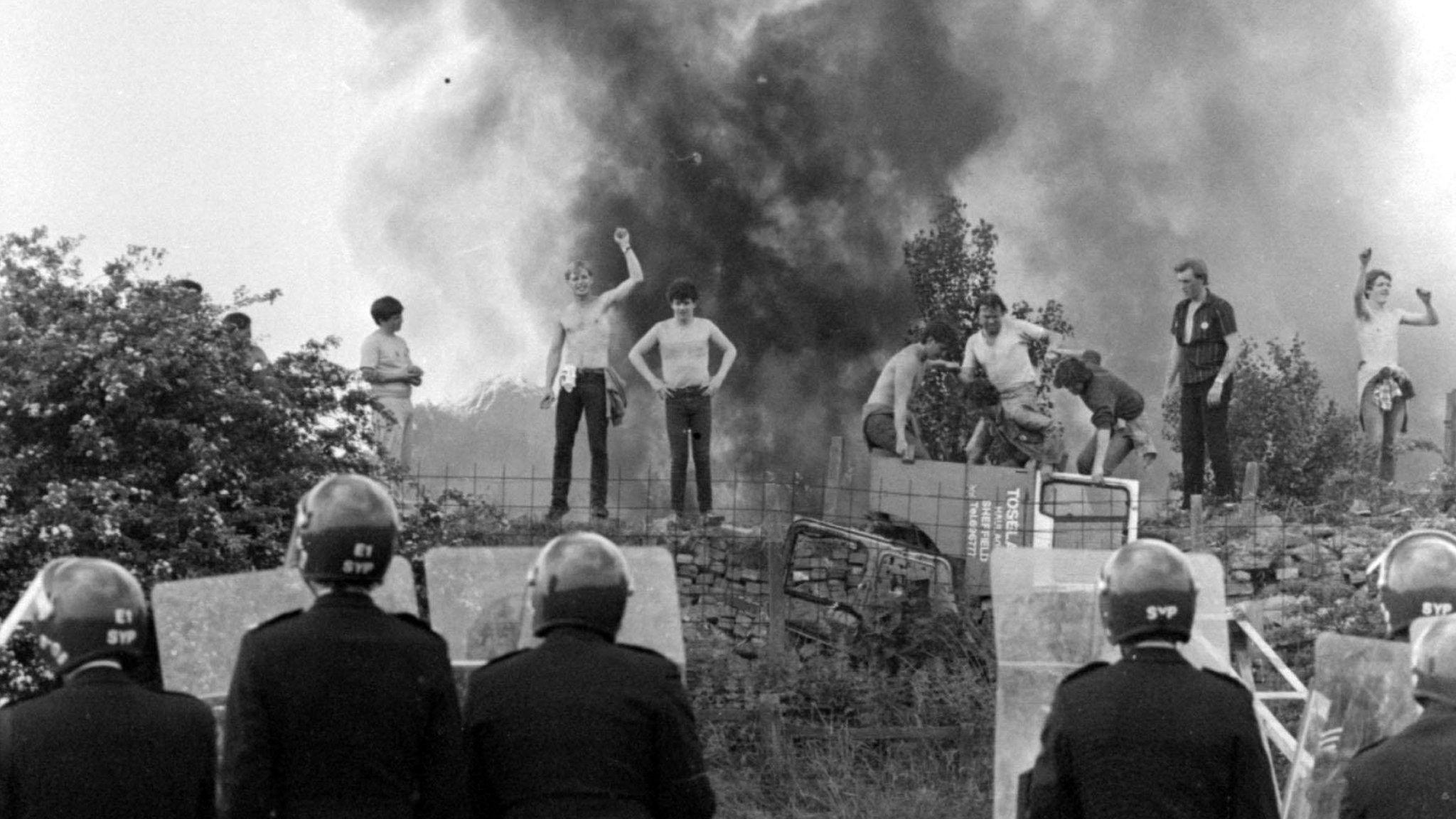Miners' artwork depicts demise of coal pits
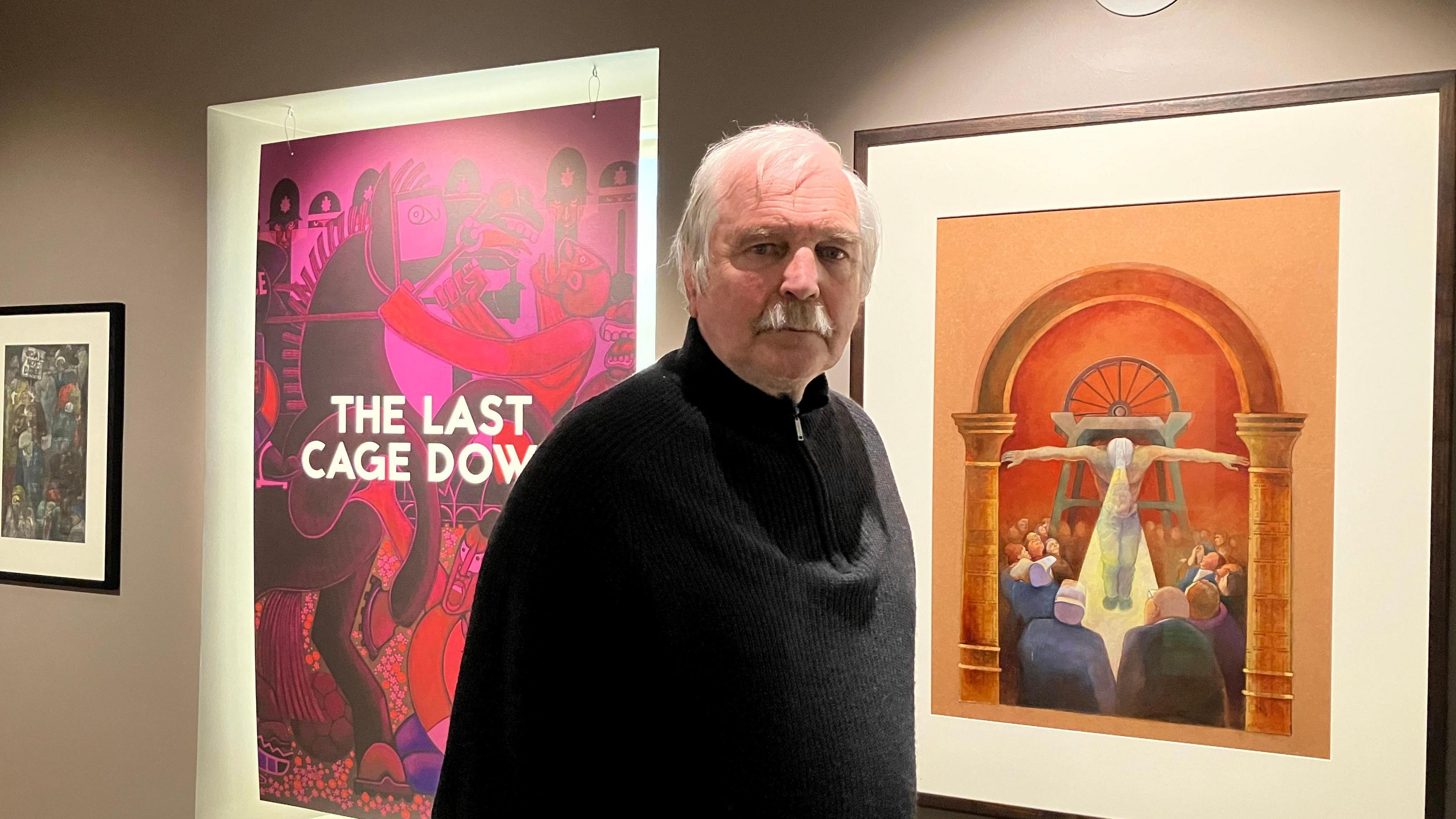
Gallery founder Bob McManners said there is an emotive side to mining art
- Published
An art gallery exploring the 1980s miners' strike and the demise of the coal pits is opening on Saturday.
The Last Cage Down is being held at the Mining Art Gallery in Bishop Auckland, County Durham, from 3 May until 6 October.
The exhibition coincides with the 40th anniversary of the miner's strike of 1984.
Bob McManners, founder of the Mining Art Gallery, said the art on display was "second to none" and was created by artists whose "very existence" was being attacked.
Work by more than 20 artists will be shown in the gallery, including Barrie Ormsby's Crucified Miner and his watercolour Miners' Strike 1984.
Robert Olley's Orgreave after Guernica will also be on display.
It depicts a violent confrontation on 18 June 1984 between picketing miners and the police.
Mr Olley said he designed the work so that the policeman's eyes follow the viewer around the room.
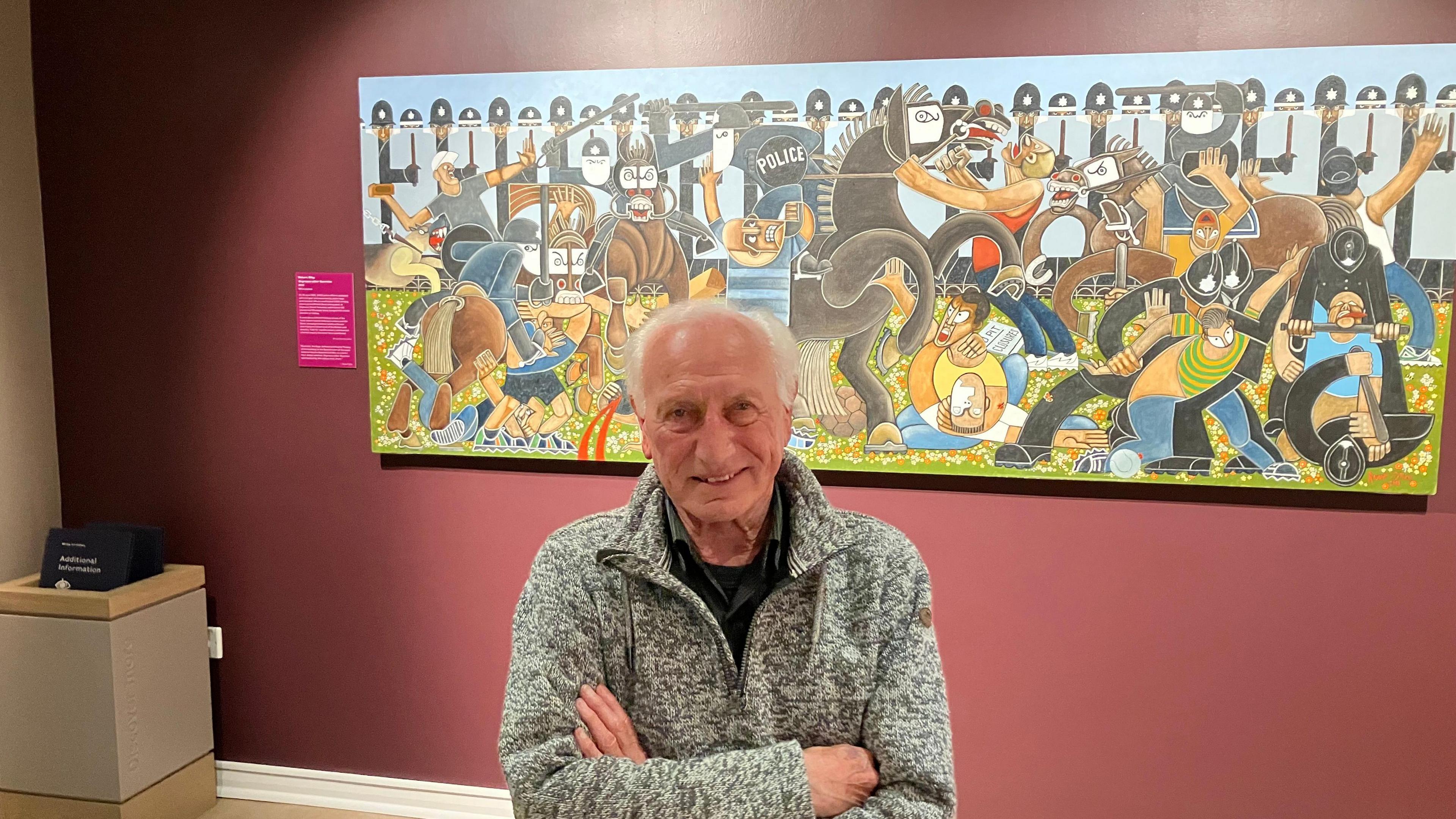
Artist Bob Olley is displaying his work Orgreave after Guernica
He said the exhibition is "a great way of recording history because in another 10 or 15 years there will not be any miners alive".
During the strike thousands of miners walked out in protest of plans to shut 20 coal pits, which led to the loss of 20,000 jobs.
There were often violent confrontations with police officers.
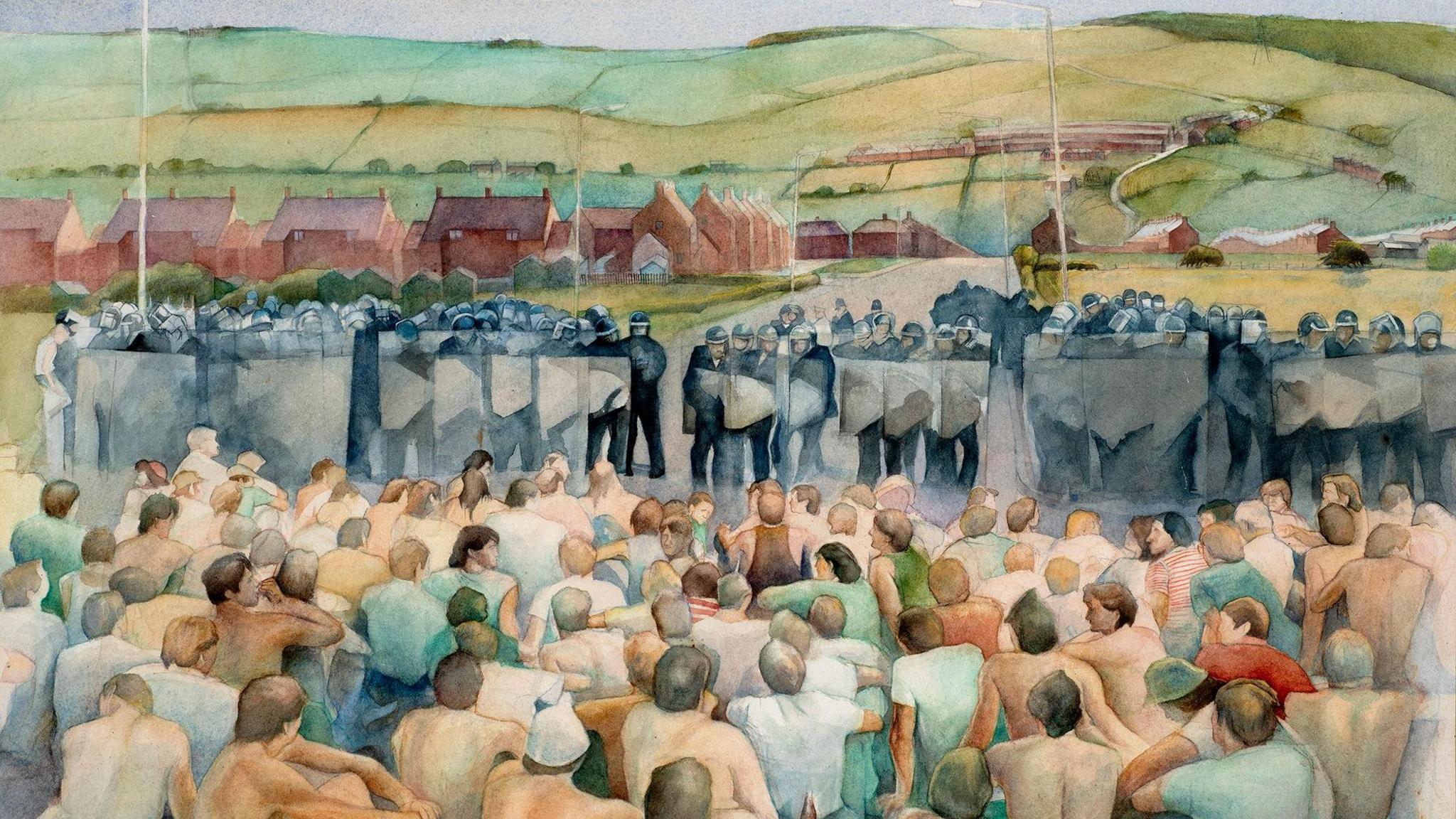
Barrie Ormsby's Miners' Strike 1984 will be on display
Mr McManners said the artwork produced my miners is often surprising because of they were meant to be "tough men who didn't show their emotion".
"When you look at mining art in general, there's an emotive side to it," he said.
"What could me more emotive than an attack on their very existence?"
He added that the paintings were rarely made for any other purpose than the "catharsis or pleasure" of the artist.
"They weren't meant to be hung on walls or sold at exhibitions," he said.
Follow BBC North East on X (formerly Twitter), external, Facebook, external and Instagram, external. Send your story ideas to northeastandcumbria@bbc.co.uk.
Related topics
More stories from BBC North East and Cumbria
- Published2 March 2024
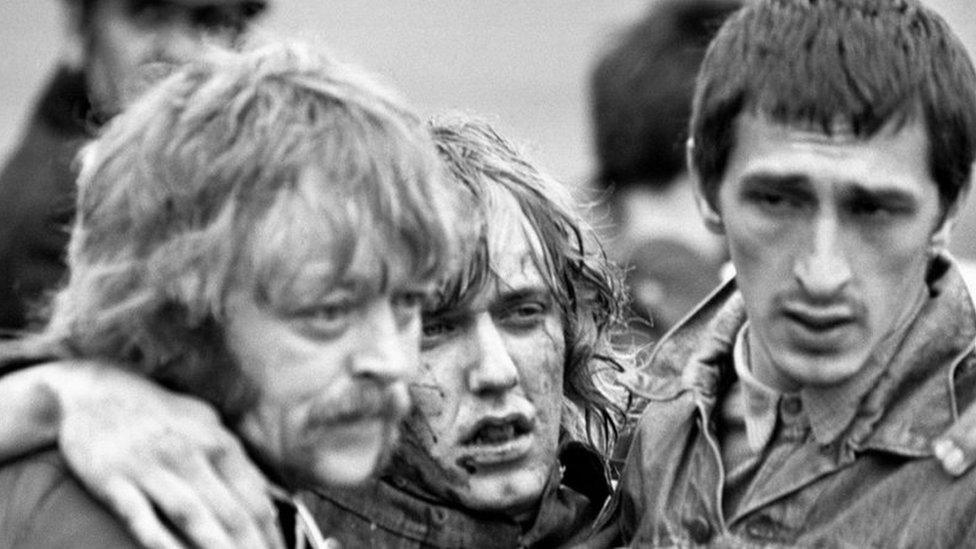
- Published3 March 2024
